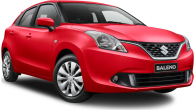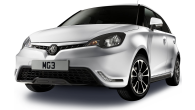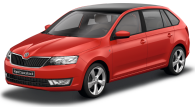As much as they've tried, and tried they have, French cars haven't made much progress in this market, which must be galling to them given that their German rivals are going gangbusters.
Is it the cars they make, perhaps their seemingly tentative presence in this country, maybe a lack of self-confidence? The truth is that it's probably all of that, and more. It certainly doesn't inspire confidence when just about every launch of a new model is accompanied by a promise to learn from the mistakes of the past and do better in the future.The Peugeot 308, for instance, was launched with the claim that it was as well built as its cross-border rivals, and drove as well as they did too. The company was trying to make up for the shortcomings of the 307, which had been slammed for its looks and lack of dynamics. To start with the 308 was aligned with the more attractive 207 and 407 models, given the same dynamic styling that made the other models their appeal.
The 308 was marginally larger than the 307, being longer and wider, with a wider track for a bigger footprint to aid the on-road stability. It was also heavier, which didn't help the performance. Inside, it had decent head and legroom, and comfortable seats, but the boot was smaller than the 307's and most of its rivals.
Underneath it was similar to its predecessor, with MacPherson Strut front suspension and torsion beams at the rear. There was a good choice of engines, with two petrol and diesel engines. The transmission choices, depending on the model, were five-speed manual and auto, and six-speed manual and auto. Standard equipment included dual climate controlled air-conditioning, cruise control, trip computer, power front windows and MP3 connection. A full-sized spare wheel is also standard.
IN THE SHOP
The lack of complaints about the 308 received at Carsguide suggest it is doing the job for its owners, although it is too early to give it a conclusive tick of approval. Prospective buyers need to be aware that the 308, like all European cars, tends to consume brakes faster than cars from other parts of the world. Expect to be replacing pads, and perhaps also discs, every 50,000 km or so. Maintenance is also crucial so look for proof of servicing when inspecting a car prior to purchase.
UNDER THE PUMP
Fuel economy was a strong point of the 308, with the small petrol engine using only 7.7 L/100 km and the smallest turbo-diesel engine using only 5.1 L/100 km.
IN A CRASH
Five stars was the best stamp available to carmakers from ANCAP and the 308 received it. It was fully equipped with front, head and side airbags, there were ABS brakes, and on all models but the base XS there was also electronic stability control.
AT A GLANCE
Price new: $27,990 to $38,990
Engine: 1.6-litre 4-cylinder petrol, 88 kW/160 Nm; 1.6-litre 4-cylinder turbo petrol, 1.6-litre 4-cylinder turbo-diesel, 80 kW/140 Nm; 110 kW/240 Nm; 2.0-litre 4-cylinder turbo-diesel, 100 kW/320 Nm
Transmission: 4-speed auto, 5-speed man, 6-speed auto. 6-speed man; FWD
Economy: 7.7 L/100 km (1.6), 8.2 L/100 km (1.6T), 5.1 L/100 km (1.6TD), 6.8 L/100 km (2.0TD)
Body: 5-door hatch, 4-door wagon
Variants: XS, XSE, XTE, XTS
Safety: 5-star ANCAP
VERDICT
More refined, roomy cabin and more stylish looks, but is pricey.
Peugeot 308 2008: XS
| Engine Type | Inline 4, 1.6L |
|---|---|
| Fuel Type | Premium Unleaded Petrol |
| Fuel Efficiency | 7.3L/100km (combined) |
| Seating | 5 |
| Price From | $2,750 - $4,290 |
| Safety Rating |
|
Pricing Guides



.jpg)

.jpg)





































.jpg)

